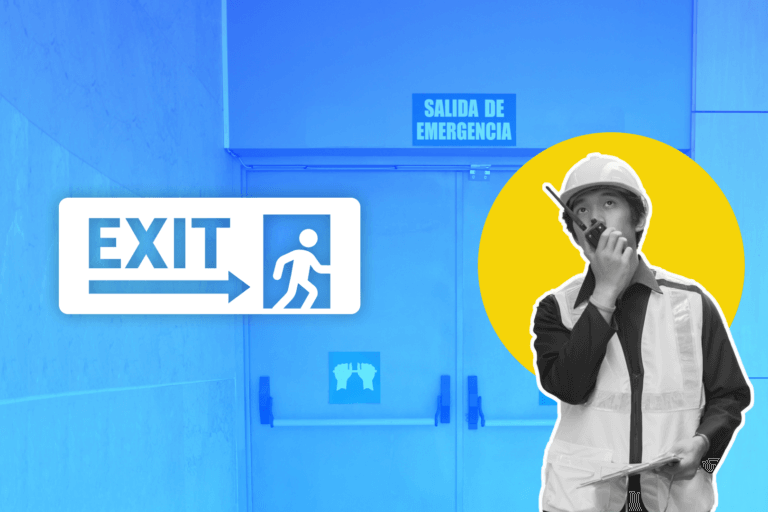The digital signature optimizes the agility and efficiency of all processes related to HSE inspections, especially the collection and analysis of valuable data to prevent accidents and environmental pollution cases.
Digital transformation is an unavoidable reality for all companies that aspire to be competitive. And although their support is essential to streamline critical processes or processes with a high strategic impact, there is not always certainty as to how to implement it effectively and concretely.
One of the vital tasks for business success that can be optimized through digital tools is the HSE (Health, Safety and Environment) Inspection. Procedure designed to verify that daily work is carried out in a safe environment for workers, and free of contamination.
The value of an HSE inspection consists of clearly and timely identifying all occupational health and safety risks, as well as the environmental hazards inherent in any industrial, productive and/or service activity.
This characteristic allows, consequently, to prevent accidents and casualties among personnel, reduce the risk of contagion of infectious diseases, and eliminate contamination by waste or toxic gas emissions, among many other pertinent variables.
To achieve these goals, companies need to design and implement agile and highly efficient HSE inspections. In other words, capable of adapting to the constant changes of a challenging environment, where the need to be ultra-competitive exponentially increases the risks to occupational health and safety.
Why are digital signatures necessary?
If a company wants agile and dynamic HSE inspections, as modern markets demand, must use all the technological and computer tools that optimize its application to the maximum. Only in this way the work of the teams in charge will be maximized and, at the same time, will be possible to minimize the probability of making mistakes.
One of these valuable tools is the digital signature, which provides broad competitive advantages both to optimize the use of physical and human resources, and to increase the security, efficiency and sustainability of companies.
This feature makes the digital signature increasingly popular among organizations that have already opted for digitization. In particular, among those that migrated from physical paper to the different formats of electronic forms.
What is a digital signature?
In simple technical terms, the digital signature is a tool that allows any document to be digitally authenticated, just as a conventional signature drawn by hand does on physical paper.
For this we use a cryptographic process that allows the recipient of a digitally signed message (for example, the institutional HSE supervisor or a government inspector), to identify who signed it (for example, the head of an HSE team that works in the field) in a simple and agile way.
This identification can be done, for example, through specialized software or apps connected with official databases, either in the same company, in the cloud or on servers of auditing entities, among other options.
In this way, we can guarantee both the authenticity of the digital document and the effective performance of the on-site inspection process.
Although each country has specific laws that regulate the use of digital signatures and the documents where they can be used, there is broad consensus that it is a practical, fast and economical way to certify documents of all kinds.
This includes, among many other options, purchase agreements, time sheets, stock inventories, electronic checklists and, of course, HSE inspection electronic control forms.
How does a digital signature operate in an HSE inspection?
Like any other control process, an HSE inspection must be validated by an inspector or responsible professional. And the only way to verify this validation is through an authorized signature, which until a few years ago was only done manually on printed physical sheets.
However, the progressive speed of the processes completely changed this scenario. Today it is no longer possible to waste time while waiting to fill out a form by hand, and not even think about to wait for someone else to sign it.
Furthermore, HSE inspections are generally carried out on site, so paper is no longer a valid, efficient, convenient or safe option for a successful process. Especially if we work in complex scenarios such as mining sites, chemical industries, steel plants, fuel refineries, forestry operations or buildings under construction, among others.
These conditions are not an obstacle for modern technology. Instead, security officers can check all relevant items on a digital HSE checklist directly on their mobile device screens.
At the end of this process, the professionals will be able to certify, by means of their digital signature, that the HSE inspection was carried out without problems and in accordance with the parameters previously established by the company’s internal regulations.
This agility optimizes resources, reduces working hours and, in addition, eliminates the use of physical documents and printers (with the consequent saving of paper and space for physical files). Also, we won´t waste more time by manually processing the data obtained during an HSE inspection.
In addition, since we work directly on a mobile device, all the information collected can be exported directly, with the electronic signature included, to the company’s servers or to the cloud.
From there, professionals in charge of the HSE area can analyze data and draw valuable conclusions in real time.
Consequently, the risk analysis capacity is improved and we can increase both the speed of response to incidents and the efficiency of the technical teams to anticipate crisis and contingency scenarios.
This translates, in turn, into an improvement in occupational health and safety indices, as well as a lower rate of accidents and/or work absenteeism. Similarly, performing HSE inspections more quickly reduces the danger of polluting the environment, improves the company’s carbon footprint and increases its contribution to sustainability. Factors that significantly improve company’s image in public opinion.
Main advantages of digital signature for the HSE inspection
All this set of characteristics allows us to conclude that the use of digital signatures in HSE inspections generates important advantages for the competitiveness of companies.
Among these we can highlight the following:
- Saves a great amount of time and resources.
- Increases the agility and efficiency of all processes linked to HSE inspections.
- Simplifies documentation management and improves internal and external controls.
- Reduces human mistakes thanks to the use of technology platforms.
- Reduces the use of paper, optimizing the company’s carbon footprint and sustainability.
- Optimizes security by reducing the risk of signature forgery or falsification.
- Improves the company’s image in the eyes of customers, the target market and public opinion in general.
At DataScope we are experts in digital solutions and tools designed to optimize the competitiveness of companies. We have a platform and mobile app that facilitates the use of digital signatures in different types of forms, useful to carry out any of the critical processes for an organization, such as HSE inspections.







